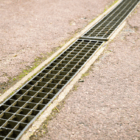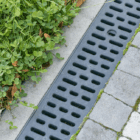In Myrtle Beach, heavy rain is part of life. Without the right preparation, water builds up on paved surfaces, seeps into the base and causes cracks and potholes. That’s why sloped grading is one of the most important steps in any paving project. By shaping the ground before asphalt or concrete is laid, water is directed away from the surface and into proper drainage systems. This simple step sets the stage for stronger, longer-lasting pavement.
How Sloped Grading Keeps Water Moving
Water is the biggest enemy of pavement, but proper grading keeps it under control. Sloped grading means the surface isn’t perfectly flat. Instead, it’s built with a slight angle so rainwater runs off naturally. This slope is barely noticeable to drivers or pedestrians, but it makes a huge difference in pavement performance.
When water flows away instead of pooling, it can’t seep into tiny cracks or weaken the soil underneath. That prevents erosion, stops potholes before they form and protects the base layer that holds everything together.
Why Sloped Grading Is Key in Myrtle Beach
The climate in Myrtle Beach puts extra pressure on pavement. Heavy downpours, humid conditions and busy tourist traffic combine to create the perfect storm for damage. Sloped grading is the first defense against that damage. It gives water a path to follow instead of letting it collect on the surface. Combined with curbing, trench drains and sealcoating, it forms a complete system that keeps pavement strong even under tough conditions.
Protect Your Pavement with Sloped Grading
Every great paving job starts with the right foundation. When sloped grading is done properly, water moves off the surface, the base stays strong and your pavement investment lasts longer. For Myrtle Beach businesses, it’s not just about smooth driving. It’s about protecting property value, reducing repair costs and making a strong impression on customers.
Call Weaver Construction Services today to schedule a paving project that’s built to handle heavy rain and built to last.
FAQs
1. How does sloped grading help prevent pavement erosion?
Sloped grading gives water a clear path to flow off the surface instead of pooling. When water doesn’t stay on top, it can’t seep under the pavement, erode the base or crack the surface. That’s how sloped grading protects the foundation of your pavement and keeps it strong and smooth over time.
2. How does soil type affect sloped grading and erosion?
Different soils drain differently. Sandy soil drains fast but can wash away while clay soil holds water and causes more pooling. Knowing your soil helps guide how steep your slope should be and whether you need extra drainage features. That way your grading design works with the soil, not against it.
3. What slope percentage works best to keep drainage strong but pavement stable?
Most paved surfaces need at least a one to three percent slope. That small incline moves water quickly without causing erosion or a rideable bump. It’s enough to guide runoff to drains or swales while keeping the surface stable and comfortable for traffic.








